Call of Duty Zombies - the accidental creation of a glorious gaming monster
“My job is to kill you.” So says Jason Blundell, Director of Zombies at Treyarch, the team that makes the Black Ops arc of Call of Duty games, and the creators of the now legendary Zombies mode. “My job is to make a game that is brutal for you. I grew up with games like Gradius, where if one bullet would hit you… it’s game over, right?” We’re discussing the origins and philosophy of Call of Duty’s most playful and passionately enjoyed mode ahead of Black Ops 3's latest slice of DLC - and Blundell is clearly loving his job as the man who marshals the virtual undead. And he owes it all to a dead Nazi solider.
Eight years ago I was a magazine editor tasked with creating a premium, 148-page celebration of the Call of Duty series. It was 2008, and the COD of that year was World At War, the tricky follow-on from what is now regarded as one of the greatest shooters ever made, COD4: Modern Warfare. It was Treyarch’s second gig, and it’s fair to say that their first stab at the series wasn’t exactly a rousing success - COD3 is widely seen as one of the poorest in the franchise. I sent a writer to Treyarch’s Californian studio to spend a few days with the team, chatting about the new game, which would form the bulk of the magazine. When she came back there was all the usual talk about ‘brutality’ and ‘historical accuracy’ and ‘flamethrowers’ and, oh yeah, she’d been told - strictly off the record - that there were zombies in the game. Not only that, but the team was really, really bubbling with excitement about it.
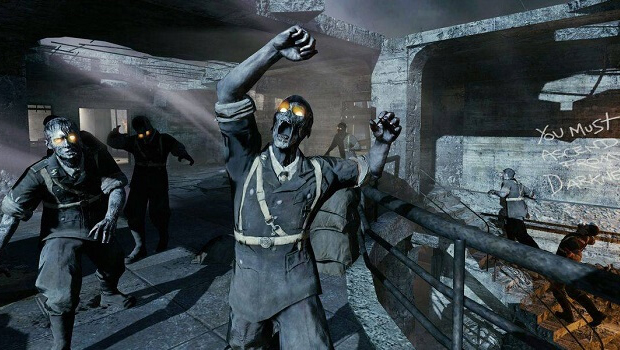
Given the rather serious nature of Call of Duty, and the subject matter it had always portrayed to that point, this was cause for a figurative drink-spitting moment. “Are you sure they weren’t teasing you?” I had to ask. Quite simply, there was no precedent for something like this, nor had Treyarch particularly marked itself out as a team that would be maverick enough to so radically play with Call of Duty’s DNA. But, sure enough, it happened.
“There was a real worry about it,” explains Blundell. “Because we were making a very serious World War 2 Pacific campaign story, which - in true Call of Duty historical fashion - had a dark edge to it. It was one of our first mature games so there was a lot of blood and dismemberment and that kind of stuff, and we were dealing with a serious subject matter. But we also had this Zombie thing that people can’t stop playing in the studio, even after working long hours on all that great campaign stuff.”
The studio was clearly nervous about the beast it had created, but how did it all come about? Well, it all started with a German soldier. Who was on fire. “World at War was a very strained development. We had a lot of very passionate, talented people working very hard to make stuff, and it was always going to be right down to the wire. There were a couple of scripters who started playing with the on-fire animations that we had, because in World At War we introduced the flamethrower. There was this kind of (Blundell flails his arms and makes noises) “Rawwwwgghh!” You know, like the 80s movie thing when people are on fire and fall down. And they took that and that was the basis of the beginnings of the zombie stumble and movement.”
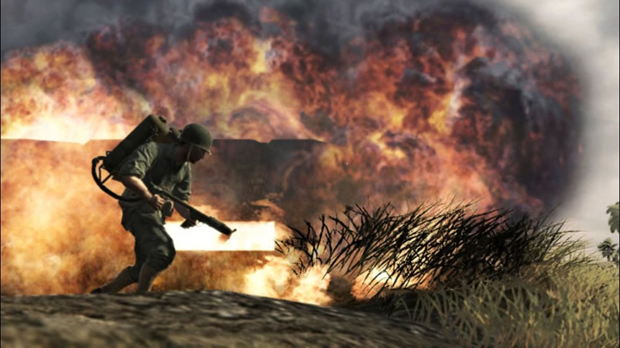
Look back at World At War and you’ll see that anyone you torch with the flamethrower holds their arms out and flails like a shambling zombie from a Romero movie. That was the spark that ignited the creativity of an entire team. Soon, everyone was getting involved during their spare time.
Blundell continues: “And we then took a bit of geo – we got one of the levels and cut it out - and that kind of basis became Nacht, which was the first map that was in World of War. We were working very, very long hours, but people started to pop their head around and have a look; people from each department. So Sound would be like ‘I can give you a (Blundell does a very convincing Zombie moan) “Mwaarrrghh!” ’, and then Characters were like “Well, I can give you a zombie head or two”. If you look back at the original stuff, it’s very much made from pieces. And that spirit I think is pervasive all the way through all the way up to Black Ops 3. But the original zombie mode was made from the leftover pieces and bits from peoples’ spare time”.
Weekly digests, tales from the communities you love, and more
"The studio director said 'How the hell are we going to... we surely can't do this"
Jason Blundell
This was a secret game. A mini-mode. An Easter Egg - whatever you want to call it - crafted from the passion and creativity of a team with little free time. And yet they believed in it utterly. So much so, in fact, that Treyarch decided to present it to Activision, to see if they could include it in the game. Let’s pause for a second here and consider how bold a move that actually was. During the late 00s, Activision had a reputation - and whether this is fair or not, I can only speculate on based on my dealing with them as an editor - of being a commerce-driven publisher. Ok, everyone who publishes video games wants to make money, but Activision’s rep was about mega-franchises delivered to a set schedule, regardless of what it took to meet these deadlines. And Call of Duty was the crown jewel of these franchises, more so than ever after Modern Warfare. The conversation about introducing a rather frivolous ‘zombie mini-game’ into a multi-million dollar franchise is… well, a very careful one.
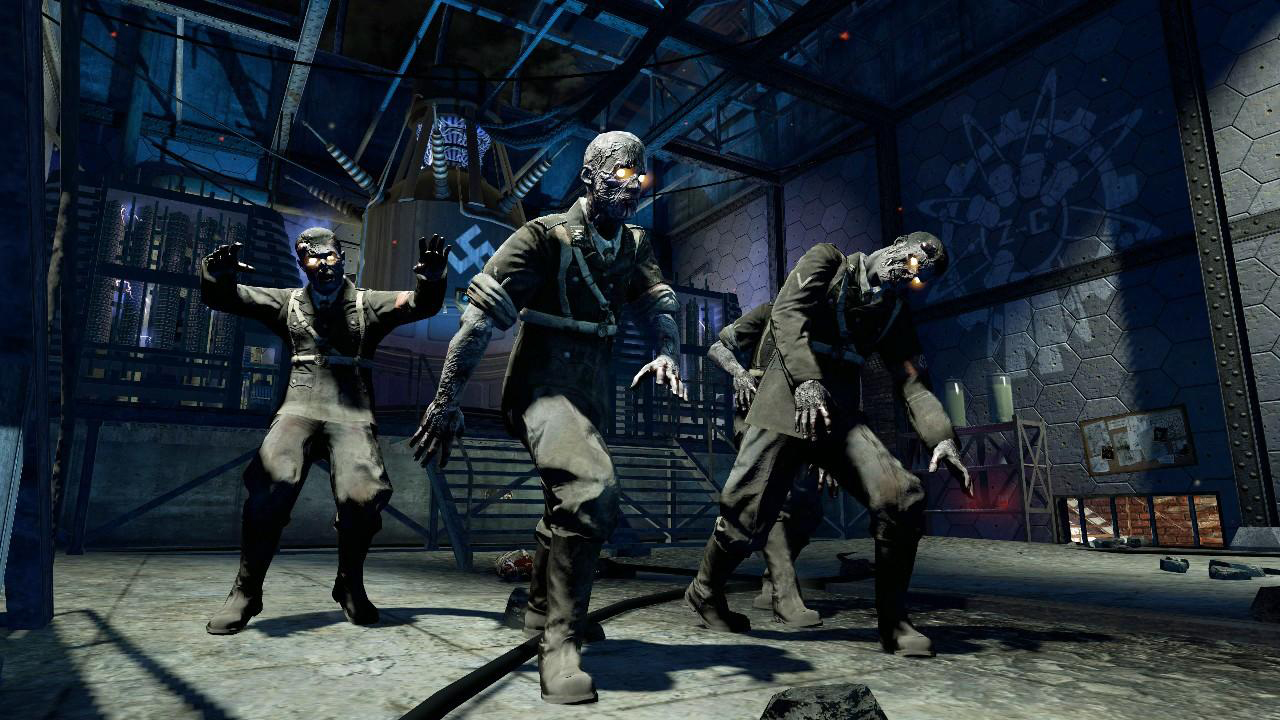
Blundell explains: “It got shown to the Director of World At War at the time, and he was like ‘It’s great and I can’t put it down… but how the hell are we going to… we surely can’t do this?’ And so we had to bring Activision executives over one at a time and just say ‘Sit down, have a play, don’t get worried – the game’s doing great but have a look at this thing...’”. By this time Zombies was a very playable experience, but still utterly basic. The animators had taken the new mantle animations from the main game, which then allowed zombies to pour in through undefended windows, and UI guys had worked up a proper scoring system and ‘wave counter’. It was, however, more or less the game that finally shipped with World At War.
The team only really knew it’d happen when Activision execs started sending emails back and forth about how far they’d managed to get through the mode. “We got to the point where they were sending emails about what round they got to,” says Blundell “And that’s when we knew we could do this, we could get away with this”. Getting away with it was one thing, but turning it into the phenomenon it became was quite another. Activision was sold on its inclusion, but still clearly worried that it would distract players from the core campaign and multiplayer on which COD built its sturdy foundations.
Blundell explains: “The deal – interestingly enough - the deal that got struck about it was: ‘OK, you can put it in, but don’t talk about it. We’re not going to promote it, we’re not going to market it’. It was going to be ‘We will put it in at the end, and see what turns out’.” The result is a series that has been getting stronger and bigger for the past eight years, and now boasts stars like Jeff Goldblum, Heather Graham, and Danny Trejo among its alumnae. But there was no guarantee that it would even be allowed to continue when the team started work on their next Call of Duty project, Black Ops.
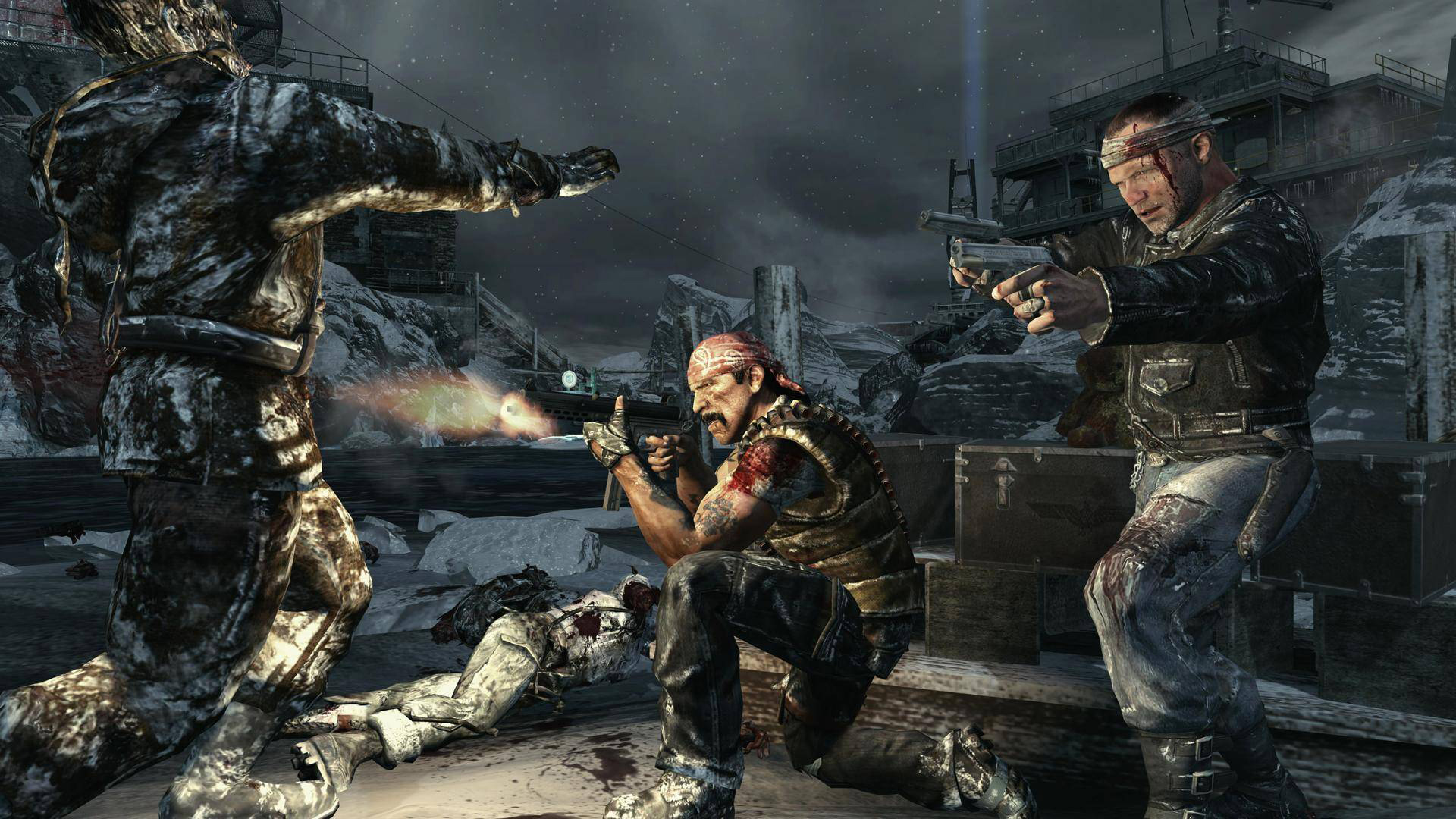
After the initial release of World At War, the buzz around Zombies mode spread around the community like wildfire, and COD players really took it to heart. I remember playing it with friends who I’d known since university - friends nowhere near as immersed in the world of video games as me - who absolutely adored it. We played for hours on end, late into the night, pushing to access the whole level, working out strategies (“Leave the last one alive, but legless, so we can barricade all the windows again”) and praying to the God of COD that our next spend at the Random Gun box would be an Alien Blaster and not another stupid sniper rifle. Turns out, the rest of the community was taking things even further, inventing stories for the characters and working out justifications for zombies to even exist inside the Call of Duty universe.
“The thing that people don’t remember today is – there was no voice-over. We didn’t have any V/O because we didn’t have any money for V/O actors or any of that stuff,” says Blundell. “The community started to write: why were you there, what the intro was about, who these people were (essentially those heroes were just character models from the World At War campaign – so the American, the Japanese, the Russian and the German). And only when we got to the DLC season, it was decided: let’s put a little bit more resource behind this. ‘OK, let’s put a zombie map in… Let’s see if this community follows this.’ And they just loved it and they were eating it up”.
And what about that Random Gun box? The first piece of magic that later spawned teleporters, Pack-A-Punch machines and ability-altering bubble gum? Blundell claims it was a joint decision from several members of the team, and it was included as that element of risk that shooters such as Destiny are now making their bread and butter. “It’s beautiful in its simplicity,” enthuses Blundell. “It was a wooden box with question marks on it, and the weapon just changes over as it’s raising up, right? It was the definition of beauty through simplicity”.
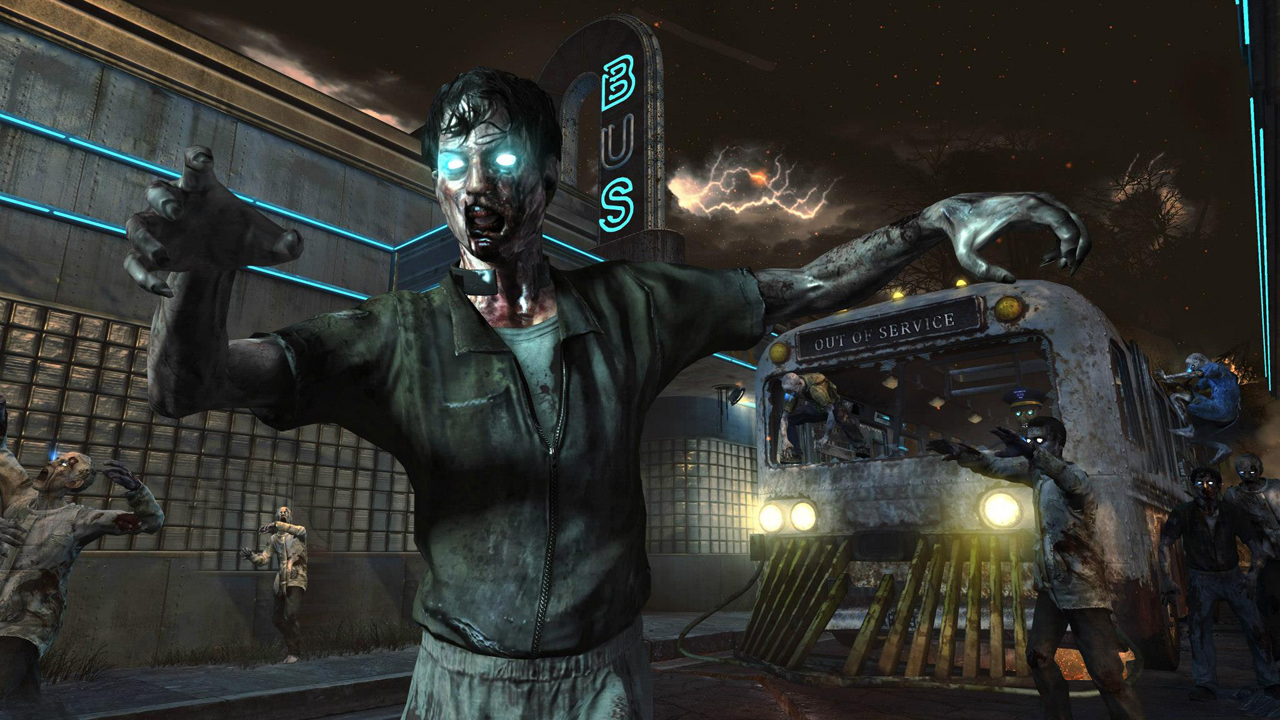
It was also a cruel mistress too. “That was the other thing as well; letting it just be penalising. And this is something that – as I took over the mantle in doing Zombies maps - I’ve said very clearly that my job is to kill you. My job is to make a game that is brutal for you. You’re going to die. It’s just a matter of time”.
"It all got put on ice, and I remember thinking at the time: ‘Uh-oh...’ "
Jason Blundell
With a lively community and DLC plans (which meant putting a man - Blundell - in charge of Zombie development at Treyarch) the future looked bright for the mode. But it was by no means a done deal. Blundell explains: “So we did De Riese, and we started working on DLC 4. And then it was stopped because again, it’s about resources and back then the studio was a lot smaller. It all got put on ice, and I remember thinking at the time: ‘Uh-oh...’”.
However, this halt in development was simply to make way for Zombies in Black Ops. “Interestingly enough every single one of those maps got turned into another map going into Black Ops. So Kino was one of them, and what turned into Call of the Dead – which was the lighthouse level - these were all levels that were actually going to be in DLC 4 technically for World At War. But we never throw away bits, we keep all the bits that we’ve got so far”.
It’s true, and very fitting. Zombies mode has always been about pieces - stealing elements from elsewhere in the game, adding little clues that run through the various iterations, bringing concepts through from the solo story (who can forget playing as JFK in the Black Ops Zombie mode?) - but it’s far from a random set of maps, included for players to have fun with. There’s an overarching story, told in various forms, that runs throughout the whole mode. In the same way that Black Ops games are inexorably linked, so too is Zombies. You just need to dig a little deeper to find the clues.
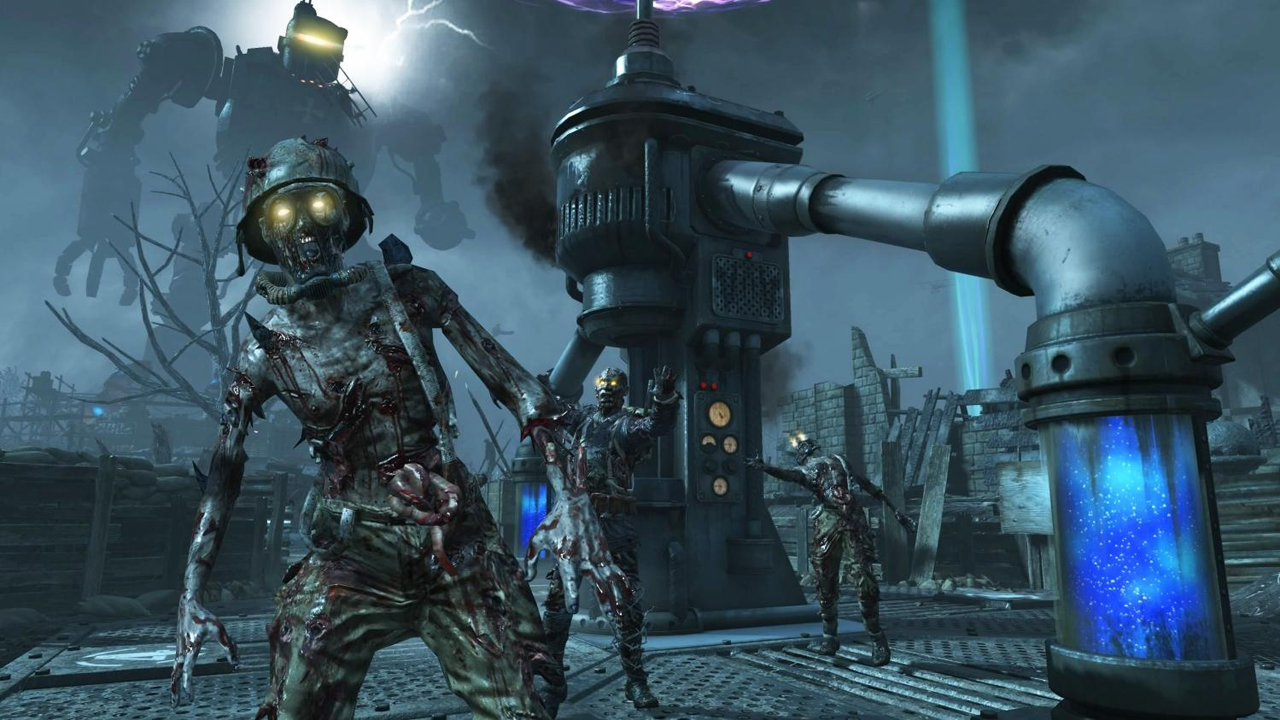
“Initially, we were making one map pack to the next in terms of ‘OK, we’ve done that one. There’s these threads that we kind of want to play with more – let’s do another narrative’,” explains Blundell. “However, just before Origins, we sat down and I said: ‘OK, well let’s plan out a story, an arc that we’re going to talk about as DLC 4’. Everything was kind of written down then, so I’ve actually had to wait to do each one: Shadows of Evil, The Giant, Der Eisendrache and now Zetsobou… they were all planned before we started Origins”.
But this posed a problem. The consistent story was only really added late in the Zombies mode lifespan (to date). Which meant there was a need to tweak certain aspects of the new maps to tie together the story from the older ones. Essentially, Treyarch is now explaining what happened in World At War, Black Ops, and BO2 by dropping clues into Origins, Shadows of Evil, and all that followed. Blundell explains: “Some people will say ‘Oh, you’re rewriting history at this point’ and I say ‘Absolutely not’. There’s no such thing as a one-off map in Zombies. Like Call of the Dead, Mob of the Dead, Shadows of Evil – all of those things and all the way back to Nacht are all part of a singular story, and that’s what took so much time when we sat down before Origins. It was like ‘OK, let’s make sense of everything prior, and then forward as well’. And I’m very happy to now be realising that at this point”.
Although the series has been running for eight years now, with over 20 maps available, people are still hunting for the Easter Eggs hidden inside them. It’s the stuff that links together all the Zombie narrative - the weird, and slightly pieced-together story that explains why the undead are in a Call of Duty game at all. To this day, there is still stuff in original map - Nacht der Untoten - that remains hidden. “I shouldn’t really admit this but I got cheesed off at the online community because someone was saying ‘Oh no there’s nothing else, we’ve got everything’. And so I was like ‘OK, what about the one in World at War’ - and I gave them a reference. Then, suddenly, there were loads of YouTube videos saying ‘Oh we found one now after six years!’. When we make Easter Eggs in Zombies, they’re graded Easy, Medium, Hard and then the next category is Impossible. Often, I’ll hear the community say ‘Well, we’ve not got the impossible ones yet’. And I reply ‘Guys, you haven’t found half the Hard ones, let alone the Impossible ones! Don’t worry about that!’. Because for us, it’s a labour of love. I’ll have staff members come up and say ‘I’ve got this thing and I put it in there and can you check it over for me?’ And that’ll stay in there for two years before anyone sees it!”
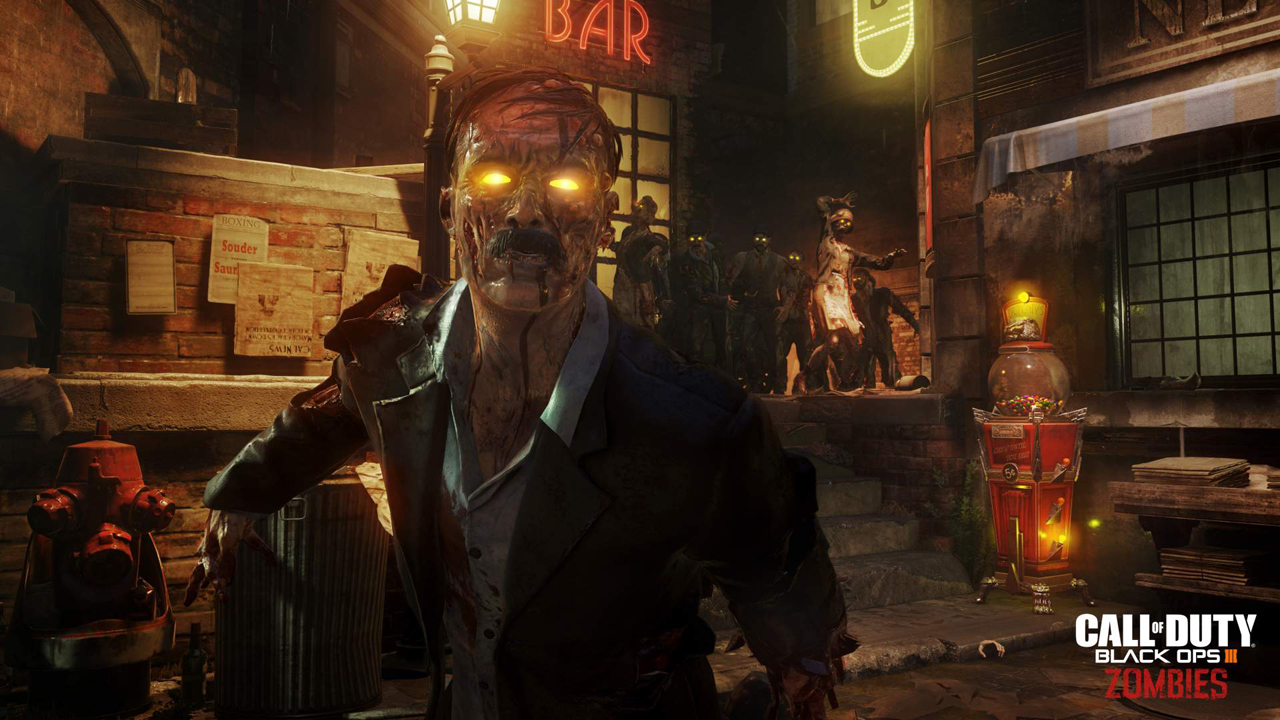
Another facet of the series that has become increasingly loved is its use of celebrities. It all started with Danny Trejo - a natural choice for a zombie-killing tough guy in Call of the Dead - and has now reached peak fame with the likes of Heather Graham and Jeff Goldblum in Shadows of Evil. It seems remarkable that Zombies mode has raised its profile so high that it can now command the attention - and admiration - of such premium Hollywood talent. So, I have to ask, who the hell made the inspired decision to get Jeff Goldblum involved?
"If I was going to get killed by anyone, I’d like Heather Graham to kill me"
Jason Blundell
It was clearly Blundell, who beams at the opportunity to talk about the Jurassic Park star. “If I was a kid and I got my pick of any Hollywood talent, I’d pick Jeff Goldblum!” he says. “Who do I pick as my sexy woman who’s going to kill someone in their bed? I pick Heather Graham! Right? And I’ve been very blessed in that we’ve asked for these people and we’ve got them. They don’t disappoint – you hear these horror stories of Hollywood talents being divas, but every single one of them has come in and delighted us.
“Just to use Jeff as an example – I was splitting my sides. Any time you’ve seen that guy in a film – that’s a quarter of his raw energy. He came in at 9am, read all his lines, everyone else’s lines and ad-libbed on top of it and bounded out of the studio like at 4pm. We were exhausted and he was just... I don’t know how he does it. A lot of coffee? Heather’s just a wonderful... if I was going to get killed by anyone (like her character in the game), I’d like Heather Graham to kill me. Ron Perlman? He’s terrifying. He’s awesome! He’s a boxer you don’t want to meet down a dark alley and he sat down during the first recording session and said ‘Why have you picked me?’ and I said ‘Well, because if there’s a zombie apocalypse I’m coming round to your house.’ And he’s like ‘Good point. Good point’.

There’s little doubt that COD Zombies is now at the peak of its relatively short existence. That’s not to say it’s downhill from here, but snagging talent like Jeff Goldblum and Ron Perlman for the latest version is something Blundell and his teammates wouldn’t have dreamed of back in 2008. It’s a testament to the passion and persistence of a creative team that found a way to express its individuality in what many see as the strictest of environments. If you’re making a Call of Duty game there’s an enormous expectation to deliver a certain level of quality, a certain type of experience. That’s felt both internally and externally. So it’s remarkable how something so indulgent and off-piste has flourished to the extent it has.
In some ways, I feel like I’ve shared the Zombies journey too, on the other side of the controller. I still play Nacht with friends, although have far less time to burn (zombies) nowadays. Thinking about that memory, I’m compelled to ask Blundell one last question - where do they go from here? Zombies have visited the moon, plagued the second World War, over-run an entire city, and bothered Jeff Goldblum… how can Treyarch top that?
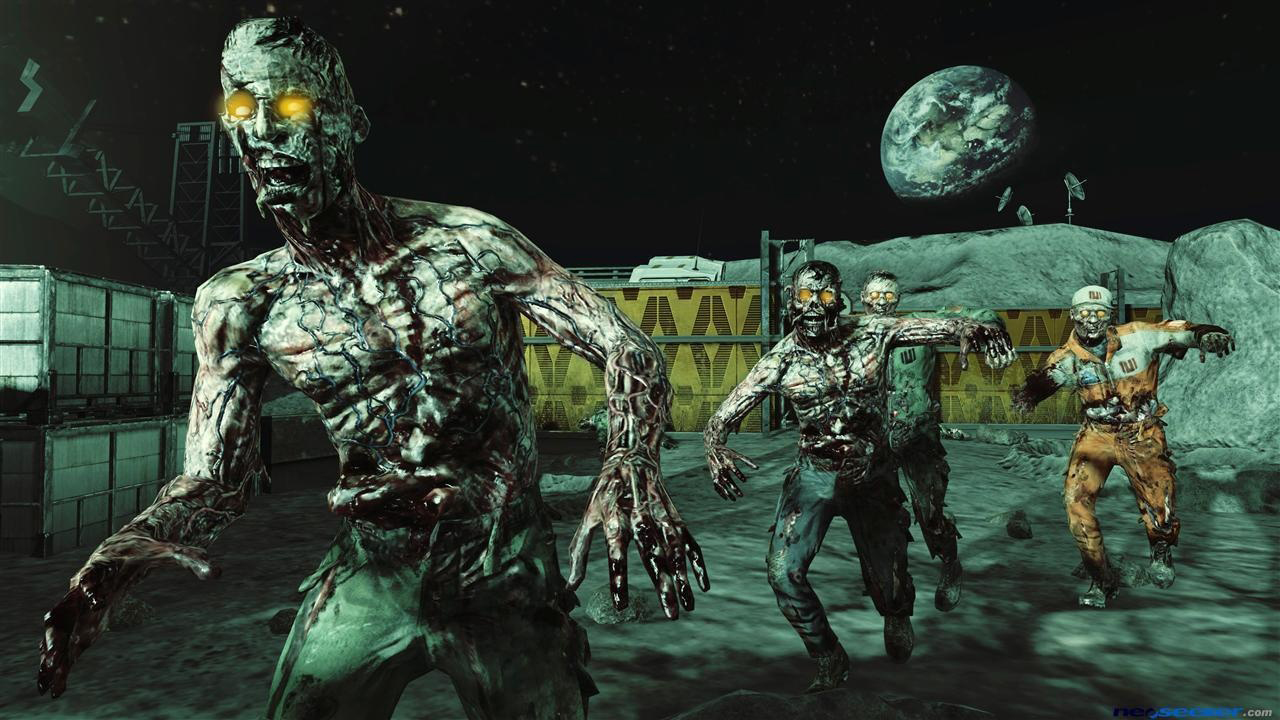
Blundell initially jokes: “I’m glad you asked – we’re going to an Island in Zetsobou No Shima, out right now!” Ok, fair enough. Personally, I’m looking forward to digging into the latest Zombie map, once this epic feature is finally published. However, Blundell knows what I’m really asking, and adds: “All I see is twinkling stars at that point, which is where do we want to go? How do we go? There’s this wonderful thing now which is consistent. It makes sense as a connected entity, and you can pick any one of those threads and move into the next thing.”
He then adds: “And I think that’s the thing that’s so exciting about it: Zombies mode is boundless, and it’s one of the things I’m probably thinking about after I finish talking to you!”
It seems there’s plenty of life left in that burning Nazi soldier.



